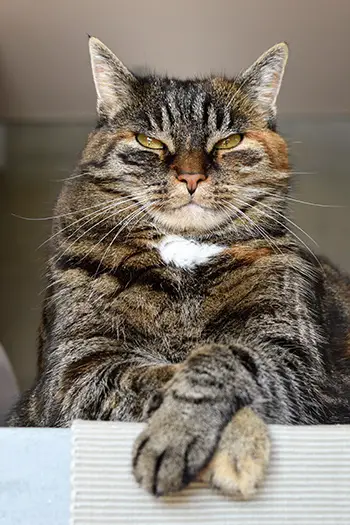Diabetes is a dreaded disease that affects not only humans but also animals. Cats are one of those examples. About 500 million people live with this chronic illness, and for the most part, there are severe consequences on one’s health. And like humans, your feline will give in to diabetes if you do not take care of her.
The most critical aspect of care for cats with diabetes is her diet. In other words, you must commit to providing your diabetic cat with diabetic-friendly food to manage the illness—the wrong diet results in further health deterioration, and worse, death. Controlling diabetes in cats isn’t that much different from how a person does it – strict dietary rules and insulin injections. The truth is if you choose the right food for your feline, you will eventually reduce the animal’s insulin requirements.
Not sure if your cat has diabetes? Here is a decent resource:
What Is the Best Food for Cats with Diabetes?
There is no such thing as a perfect meal for every diabetic cat. The key is to figure out the specific dietary needs of an animal with diabetes. Since cats are carnivores, it means you shouldn’t deprive her of stuff like amino acids, protein, and fatty acids. What your diabetic cat must avoid is a large concentration of carbs.
 Most experts agree that the best diet for a diabetic cat is the one that contains nothing more than 10% carbs. The food you give her must emulate her natural prey diet. In other words, you feed her something quite similar in nutritional content to that of her prey in the natural world.
Most experts agree that the best diet for a diabetic cat is the one that contains nothing more than 10% carbs. The food you give her must emulate her natural prey diet. In other words, you feed her something quite similar in nutritional content to that of her prey in the natural world.
If we were to come up with figures that describe an optimal feline diet, then it must have at least 50% protein, 45% fat, and 2% carbs. Experts contend that the highest remission rates occur when diabetic cats embrace a low-carb diet that contains less than 6% calories derived from carbohydrates.
The reason why you must commit to a controlled level of dietary carbs is to lower the blood glucose level of your diabetic cat. When the blood sugar is consistently down, the need for insulin injections is reduced.
The switch to a low-carb diet for your cat will have considerable effects on blood glucose levels, which is why home testing is essential. You must have a separate testing kit to be used exclusively for your feline since you don’t want her to suffer from hypoglycemia. There’s a chance that the effects are immediate once you make the switch. It means that you don’t wait for weeks or months before being compelled to reduce the dosage of insulin. Be reminded that super-low blood glucose levels could lead to permanent brain damage and sudden death.
As an owner of a diabetic cat, part of your responsibility is to know how to take care of your feline. Aside from regular visits to the veterinarian, you must monitor the changes in her blood glucose levels relative to her diet.
Focus on What’s Healthy
There’s no denying the role of a balanced and healthy diet for controlling feline diabetes. Giving your cat healthy food ensures that she gets the nutrients she needs for energy and growth. The challenging part is to pick the right variety to minimize fluctuations in blood glucose.
Here is a video that talks about diabetic cat food recipes:
The concept of proper nutrition for feline diabetes consists of the following:
Prescription Diets
Prescription diets refer to specially formulated food for cats with diabetes. The objective of a prescription diet is to manage the weight of the pet while making sure that she isn’t deprived of the essential nutrients she needs to live a healthy life.
Nonprescription Diets
Not all cats with diabetes need prescription diets. You may embrace a nonprescription diet based on a meticulously controlled routine. You need to do extensive research to come up with the ideal plan if you’re using canned food. Even if you don’t intend to use a prescription diet, you still need to talk to your veterinarian.
Water Intake
Water is as essential as any other component of your cat’s diet. Clean drinking water should be accessible to the animal all the time.
A healthy diet means being able to control the disease. It is not like you must limit the variety of food that you feed to your cat; it is more about knowing how to control it. You start by consistently feeding the cat with the same amount of food at the same time every day. The purpose is to prevent a fluctuation or sudden rise in the blood glucose levels.
Keep in mind that insulin injections and feeding times must work together to ensure that glucose absorption will coincide with the peak action of the administered insulin treatment. You should feed half of the cat’s daily food requirement with the insulin injection or before it. If you are unsure about the ideal caloric value for your cat, you can ask the veterinarian about it.
The post What To Look For In Diabetic Cat Food appeared first on Furry Friends Gear.
What To Look For In Diabetic Cat Food posted first on https://furryfriendsgear.blogspot.com
No comments:
Post a Comment